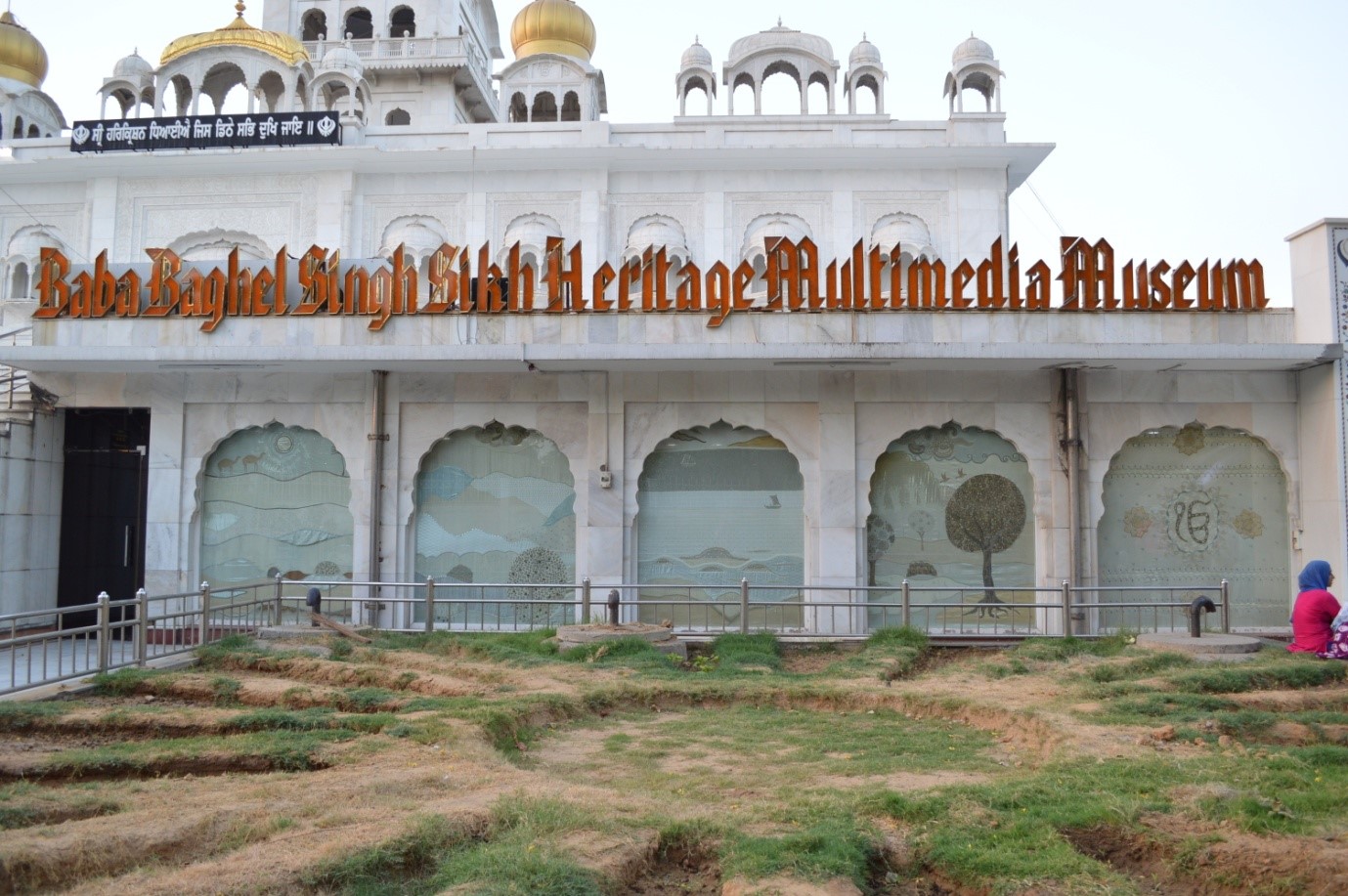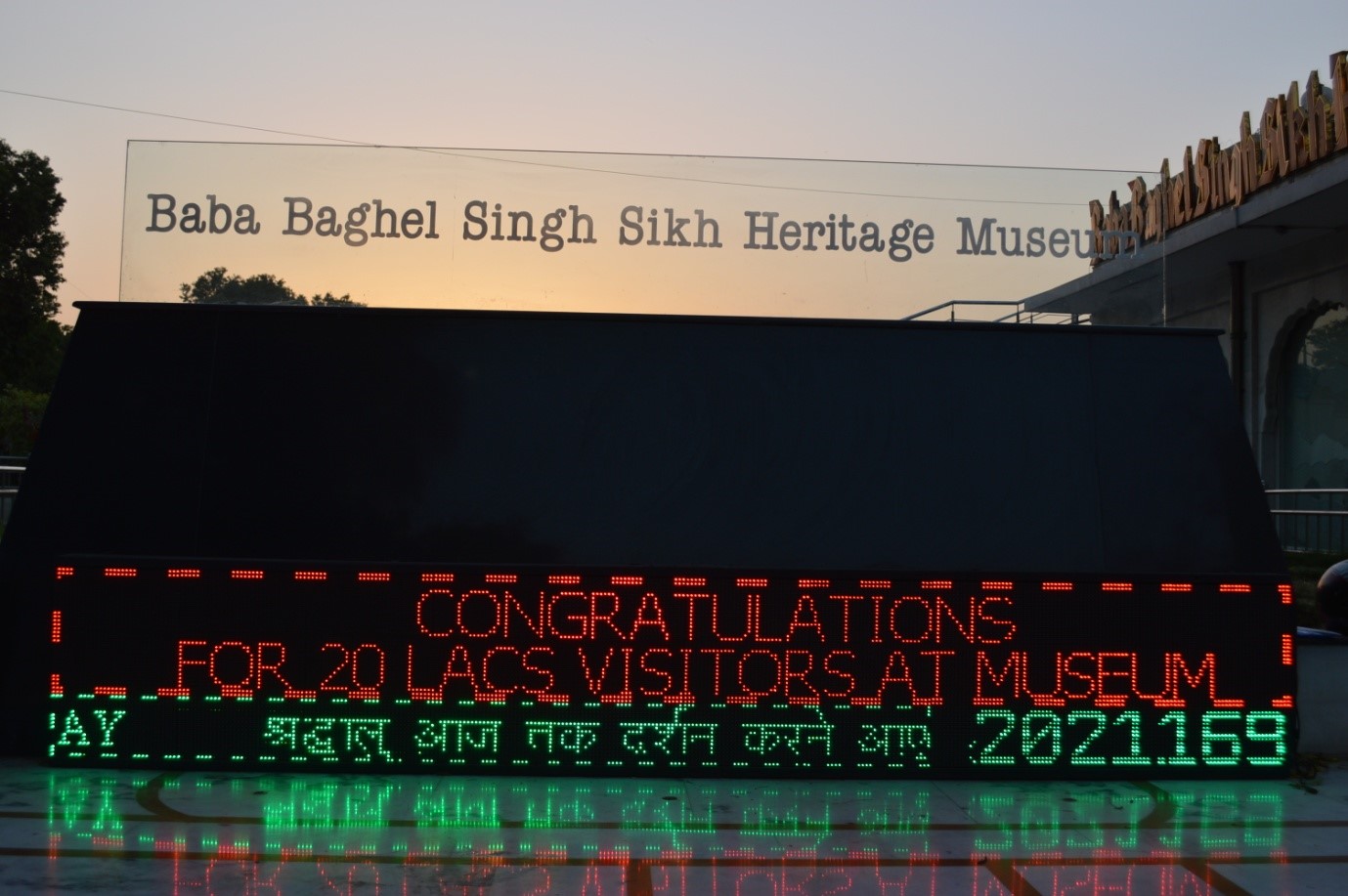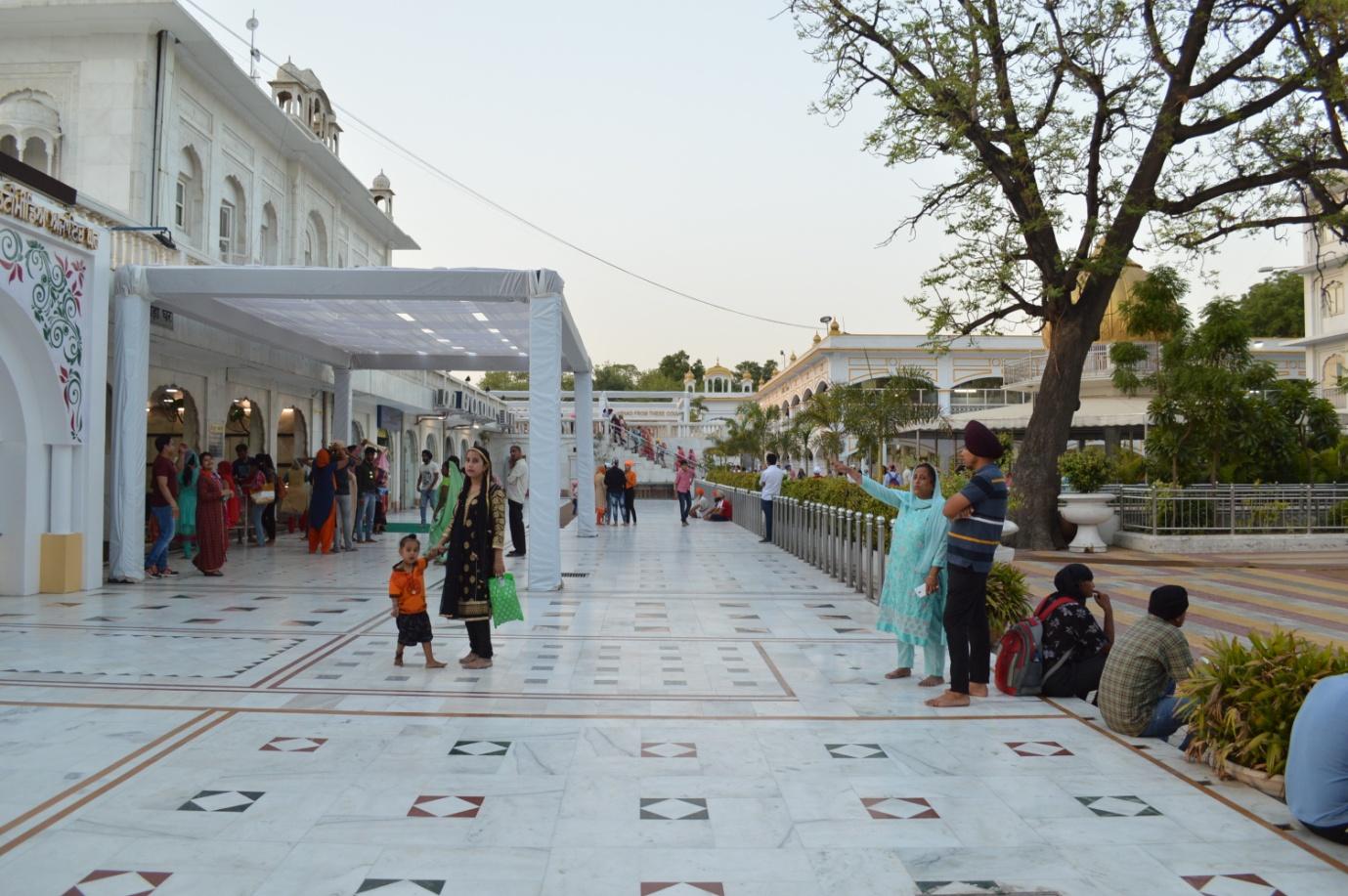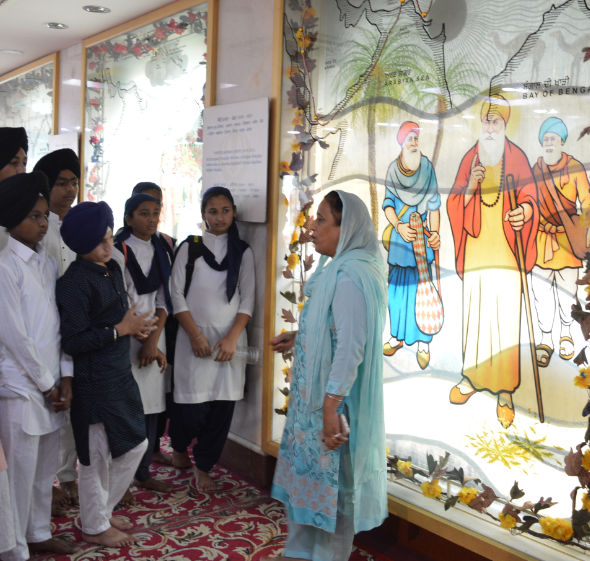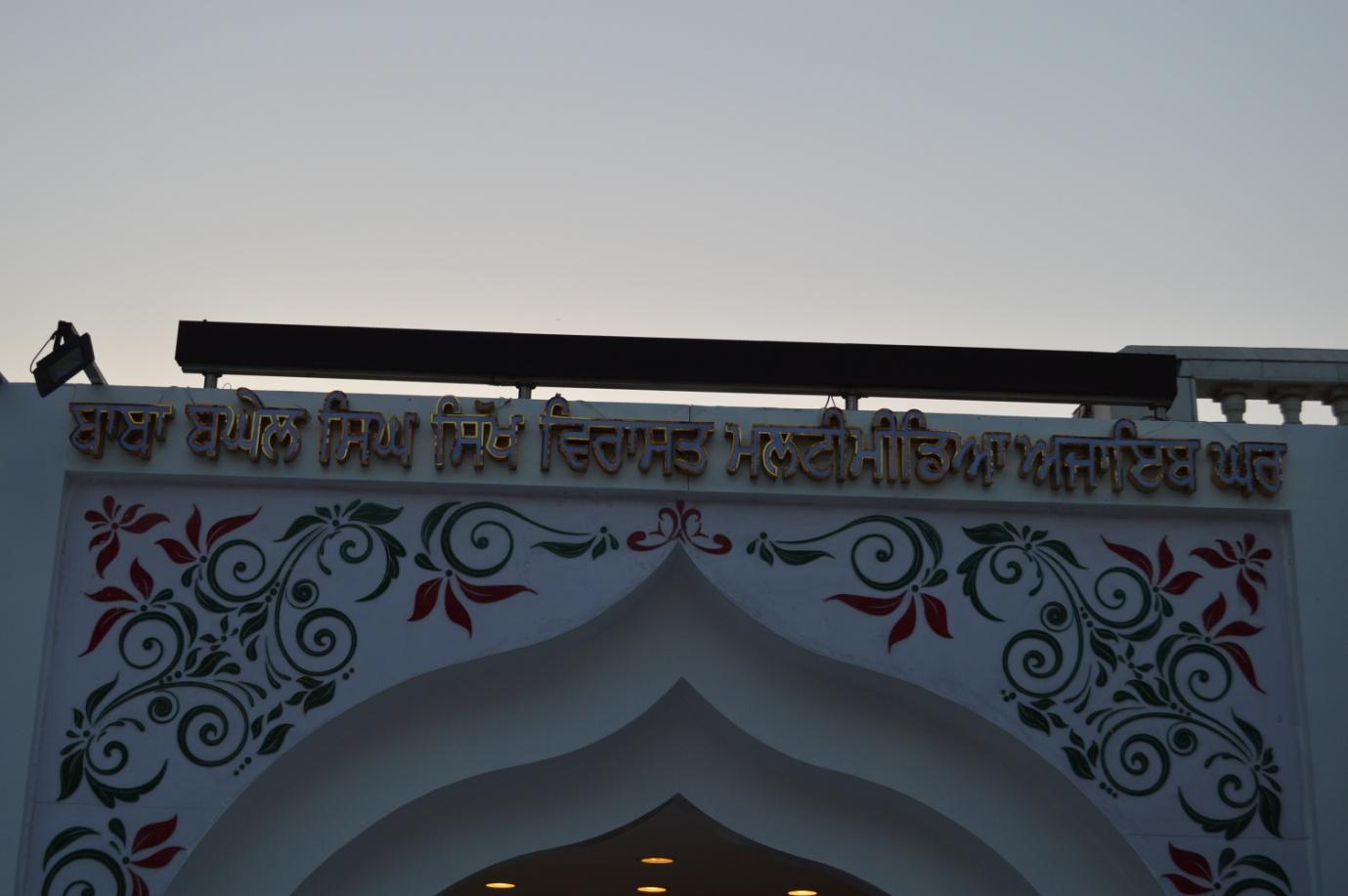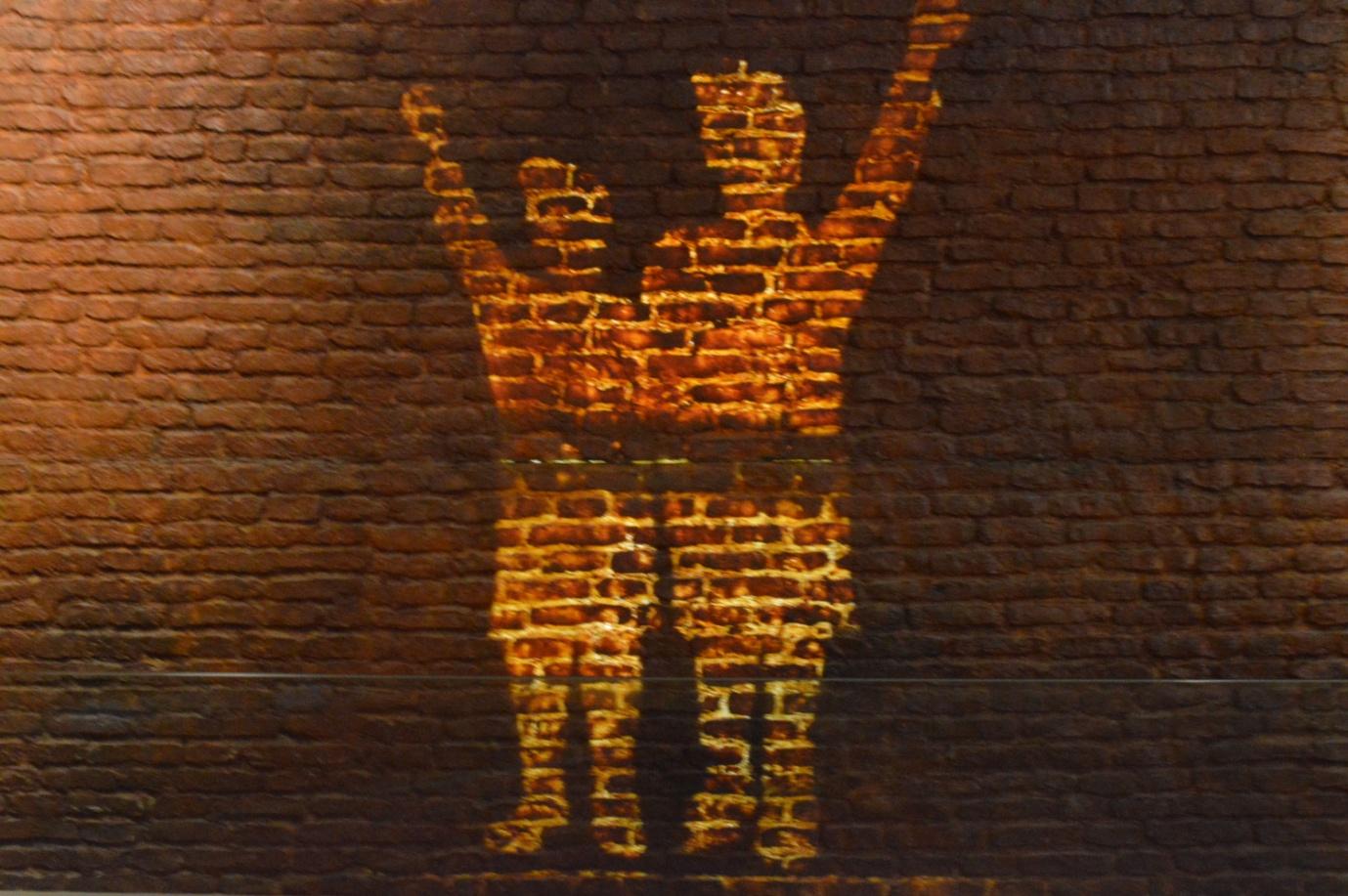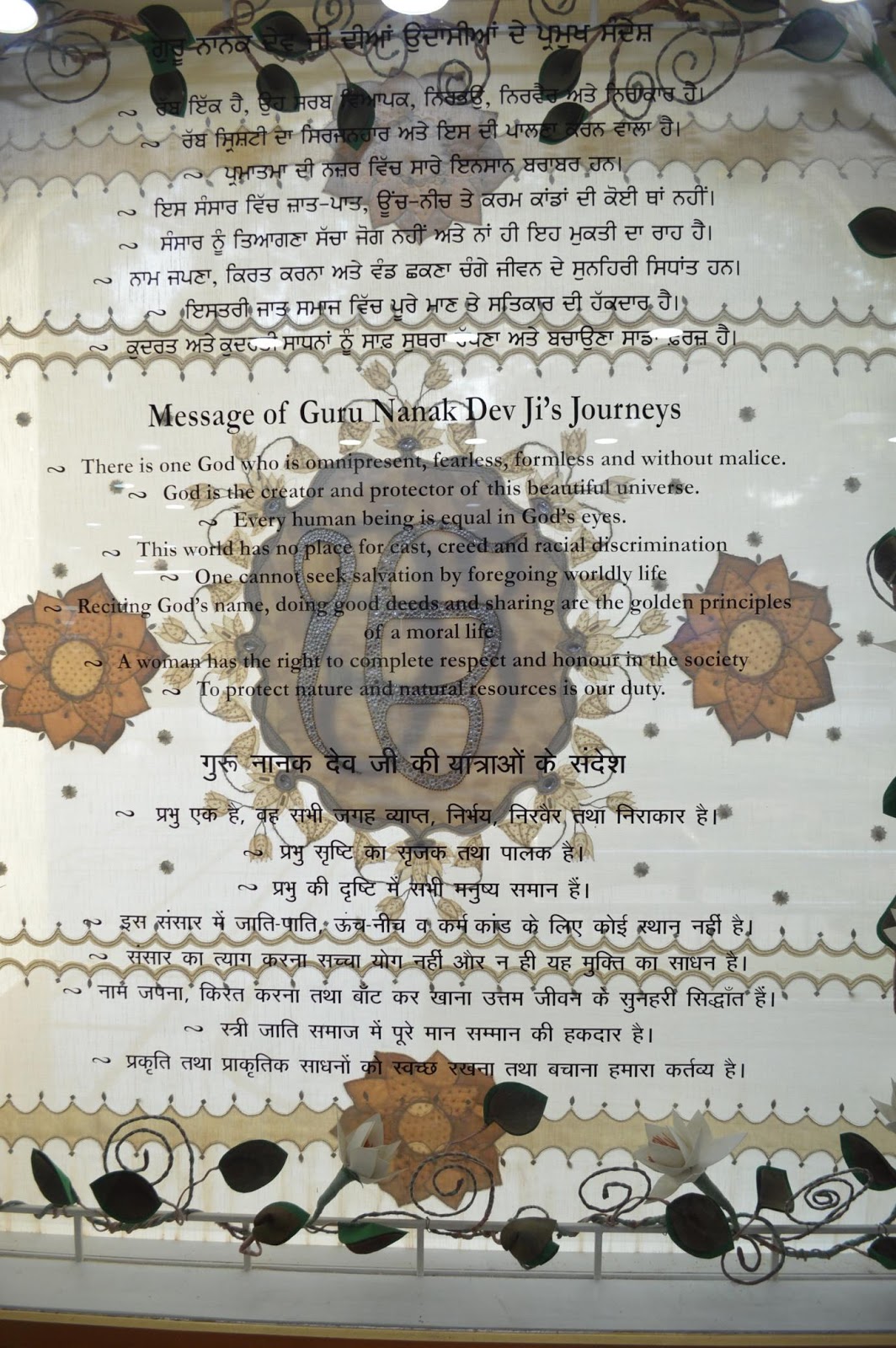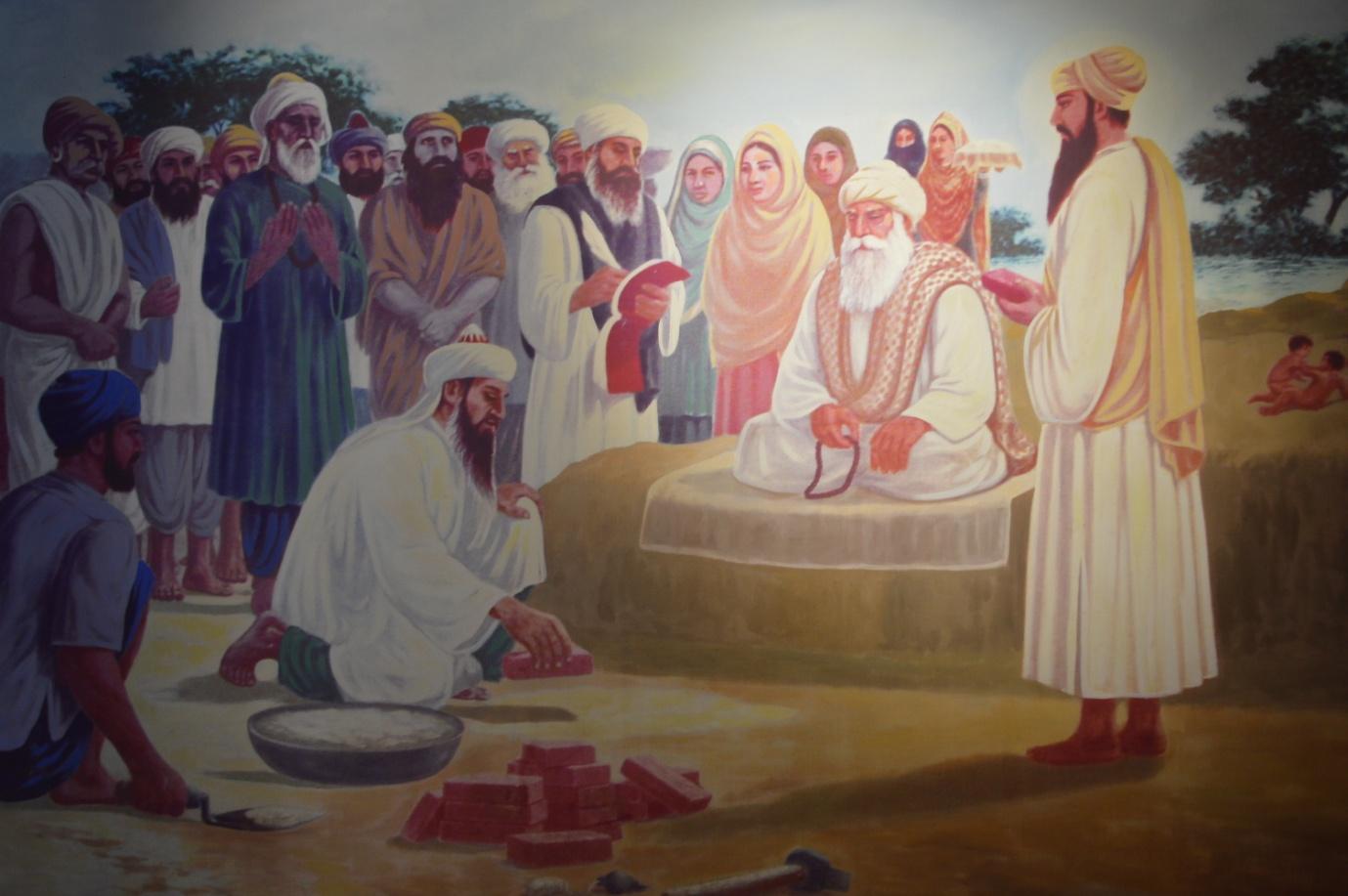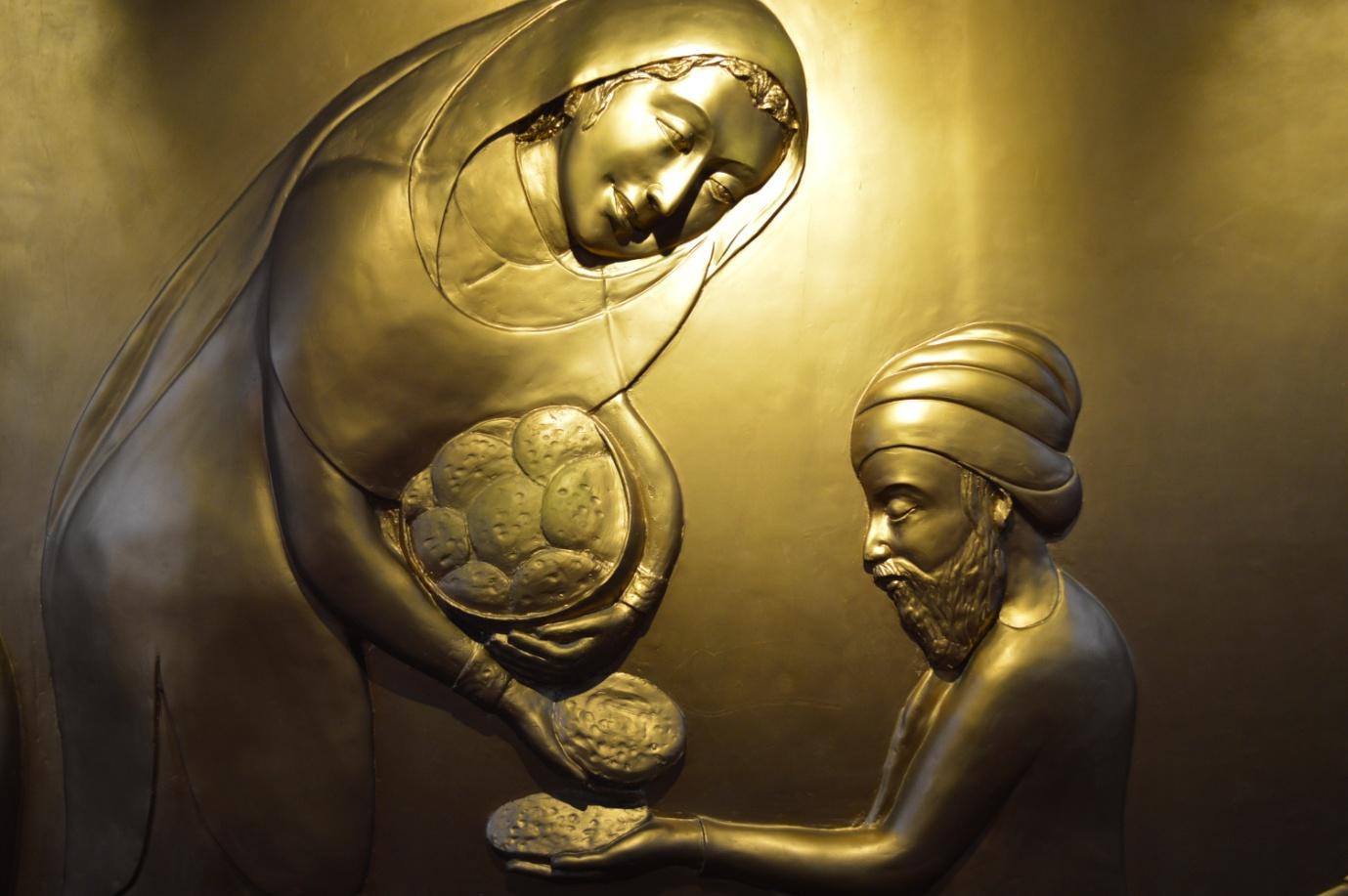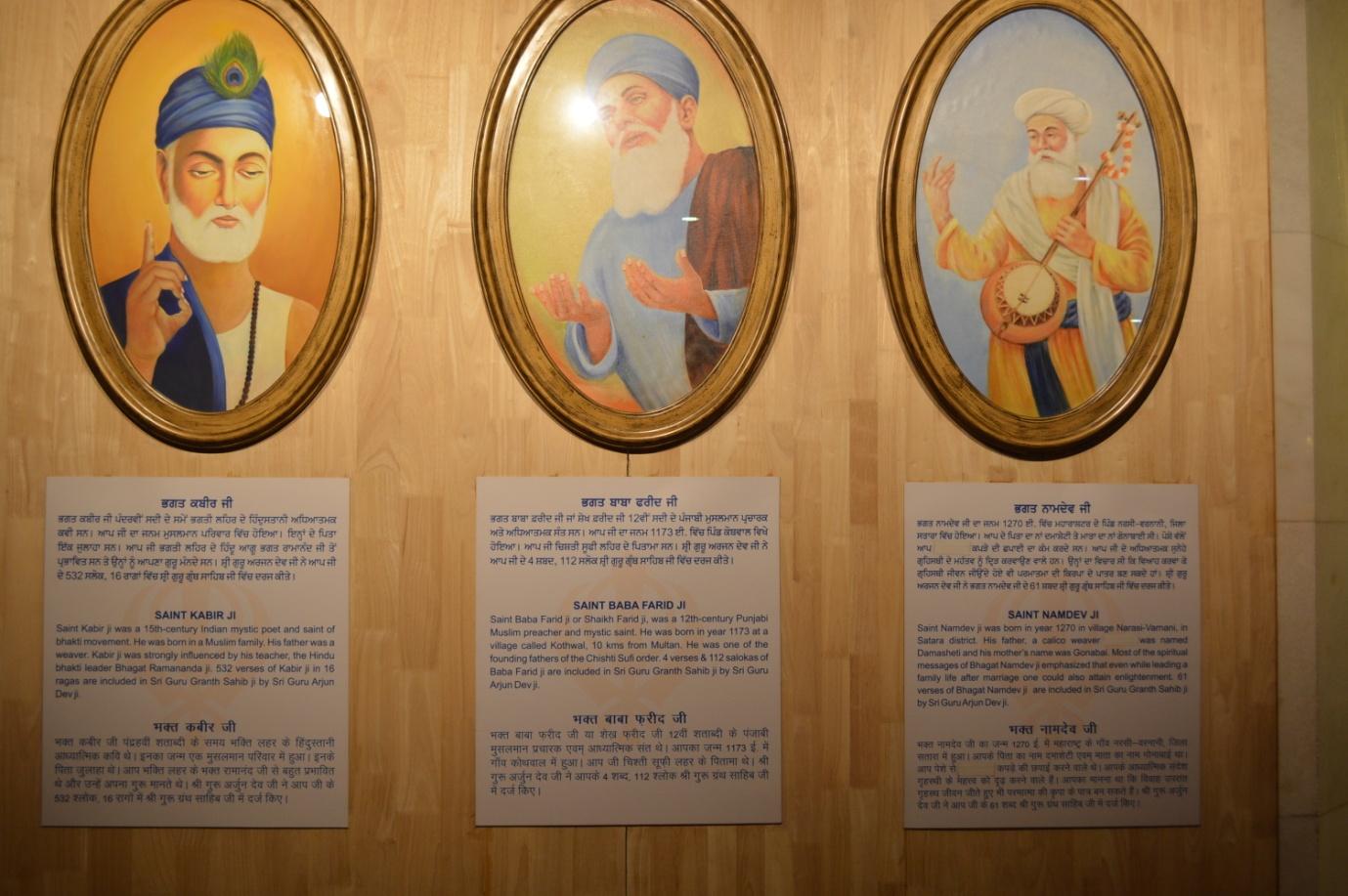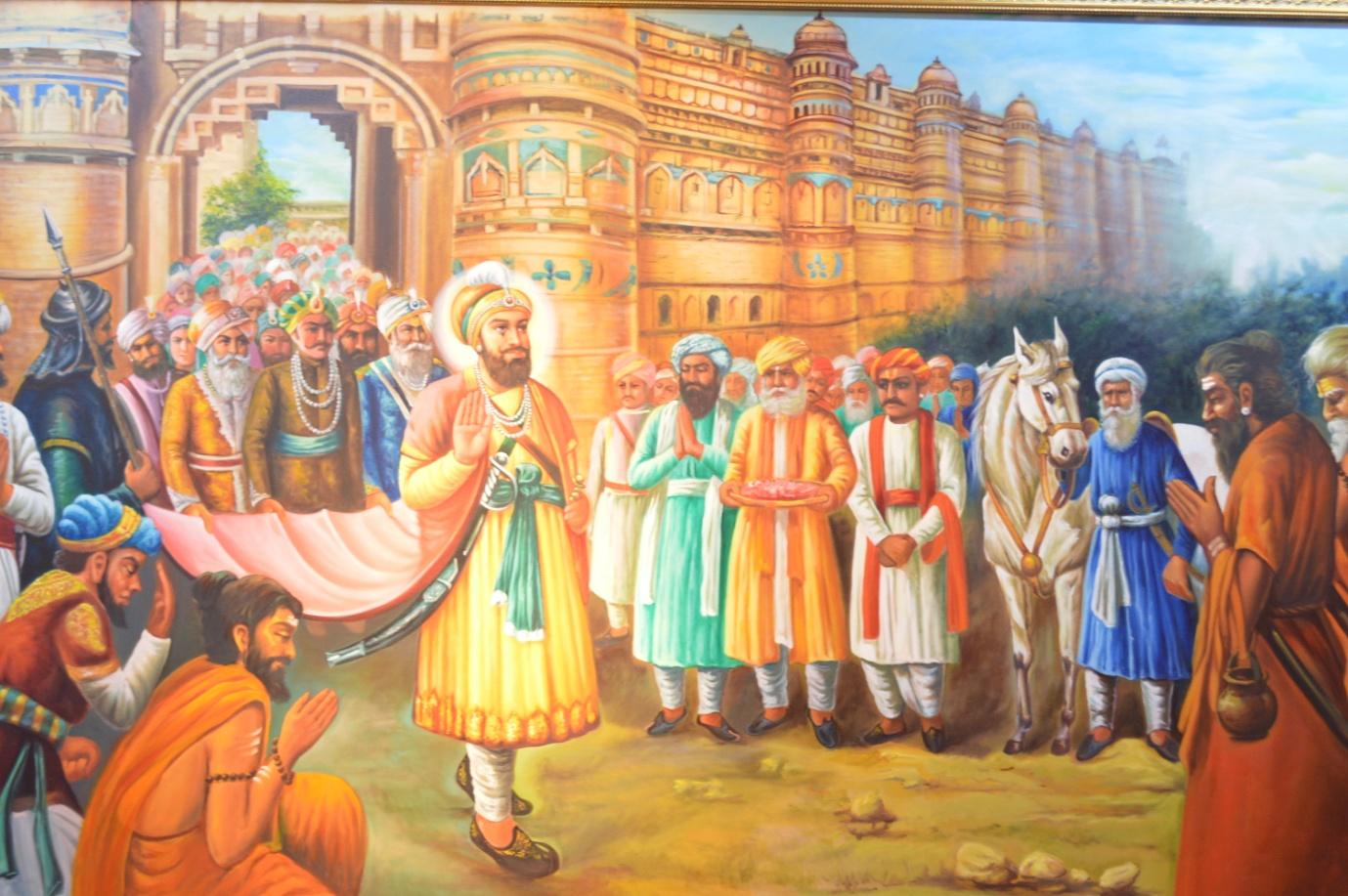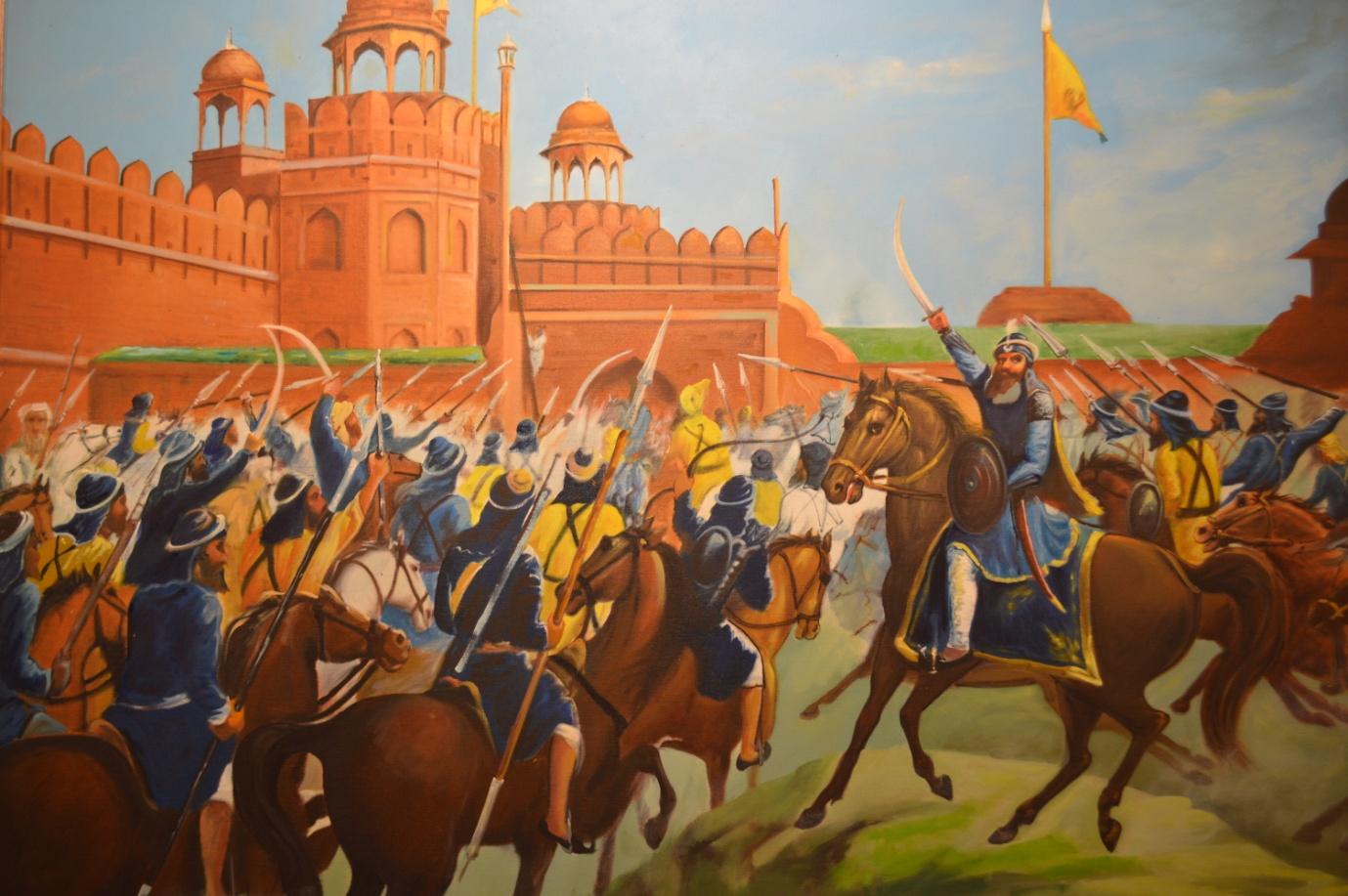Museum Address
Gurudwara Bangla Sahib, Ashoka Road, Hanuman Road area, Connaught Place.
Email
sikhheritagemuseum@sunfoundationindia.org
Are there any docents or guides who visitors can directly call to book for a guided tour?
No
When was the museum established?
2014
Briefly describe the history of the museum, its collection and donors.
The Baba Baghel Singh Sikh Heritage Multimedia Museum was built in 2014 by Vikramjit Singh Sahney. The museum is located on the premises of Gurudwara Bangla Sahib, and was built with the aim to impart knowledge about Sikhism, its principles and ideals to present and future generations. The museum offers a variety of services, such as audio recordings alongside the artefacts (in three languages—Hindi, Punjabi and English). It also provides books on Sikh history in various languages, including a few foreign languages like French, Italian and Russian as well as some regional Indian languages like Telugu, Kannada, etc. A painting depicting the Sufi saint Mian Mir laying the first stone of Sri Harmandir Sahib is of great importance. The painting reflects the fact that Sikh gurus believed in involving anyone who had a spiritual connection with God, irrespective of the community they came from.
Workshops/seminars/lectures
No
Library and archives services
No
IT facilities ( Photocopying, printing, computer )
Yes
Any other facilities
Medical facilities - Gurudwara Bangla Sahib has a polyclinic. Since the museum is a part of the gurudwara, the clinic is also accessible to the visitors.
Conference/ Seminar hall
No
Who manages the museum?
Others
Others:
Collaboration between the Sun Foundation and the Gurudwara Prabandhak Committee
Person-in-charge of the museum
Director
First Name
Surjeet Singh Azad and Anita Oberoi
Reference Link
1. Reference boards alongside every art piece (containing information regarding the piece). 2. Member of the staff, Ms Anita Oberoi, and the museum brochure.
What is the average duration to see the museum?
1-2 hours
Map your museum’s correct location on the map given below.
Is the museum currently closed?
No
Image for museum exterior/building
Gallery Images
Image title
The museum complex
Image title
Paintings displayed in the museum gallery
Image title
Exterior of the museum
Image title
School children being taken on a museum tour
Image title
Ashoka Road gate - this gate is closest to the museum
Image title
Museum signboard in Punjabi
Image title
The entrance to the museum
Description of the Image
In the year 1704 , Guru Gobind Singh's own retainer betrayed his party for Nawab Wazir Khan of Sirhind. The nawab tried to flatter and persuade Guru Gobind Singh's sons--Zorawar Singh and Fateh Singh--who were known as the young Sahibzadas, to convert to Islam. When they refused, the nawab ordered them to be bricked alive.
Image title
An artwork depicting the sacrifice of the Sahibzadas
Image title
Guru Nanak's first journey and his messages
Description of the Image
Guru Arjan Dev invited the Sufi saint Mian Mir to lay the first stone of Sri Harmandir Sahib in 1558.
Image title
A painting depicting Mian Mir laying the first stone of Sri Harmandir Sahib.
Image title
Artwork depicting Mata Khivi, who introduced the idea of 'pangat'.
Image title
Verses, ragas and shlokas by Kabir, Baba Farid and Namdev are included in the holy book, the Guru Granth Sahib, by Guru Arjan Dev
Description of the Image
The emperor Aurangzeb had decided to convert every person in Hindustan to Islam. The Kashmiri Pandits, fearing Aurangzeb's oppression, reached out to Guru Tegh Bahadur, who sacrificed his life to protect the oppressed and the suffering.
Image title
A mural depicting the episode between the Kashmiri Pandits and Guru Tegh Bahadur
Description of the Image
The emperor Jahangir arrested Guru Hargobind after hearing that he was preparing to train Sikhs as warriors, and imprisoned him in Gwalior Fort. Years later, when he was told that he would be released, the guru refused and said that he would not leave alone. On hearing this, the emperor said that all those holding on to Guru Hargobind's cloak could leave. The guru had a cloak made that 52 kings (who were imprisoned with him) could hold on to. Thus, the guru and all the kings were released.
Image title
A painting depicting Bandi Chhod, an important event in Sikh history
Image title
Artwork depicting Mata Khivi, who introduced the idea of 'pangat'
Image title
A painting depicting Baba Baghel Singh capturing the Red Fort.
Getting there
The museum is easily accessible by the metro. The closest metro station is Patel Chowk.
The museum is near the Ashoka Road gate of Gurudwara Bangla Sahib.
Opening Days
Sunday
Monday
Tuesday
Wednesday
Thursday
Friday
Saturday
Public holidays
The best time of the day to visit the museum?
As around 1,200 people visit the museum daily, it is almost never empty. The museum is most crowded on Sundays and Saturdays. Students usually visit the museum in the morning, and this is when it is least crowded.
Interesting things about the Museum
1.What makes this museum unique is that it is a part of the gurudwara. Visitors not only learn about Sikh principles through the museum collection, but can also witness these ideals and practices being respected and followed in the gurudwara.
2. An art piece depicting Mata Khivi serving people food with her own hands is very interesting as it throws light on the idea of pangat. Mata Khivi evolved the concept of langar (a community kitchen), where people sit in systematic rows called pangat to receive the food prepared by the sangat (people who come to worship in the gurudwara). Another important aspect of pangat is that everybody, irrespective of cast, creed or religion, sits together to eat the meal.
3. Since this is a multimedia museum, it presents Sikh history in a variety of forms. People prefer different ways of consuming information. The museum presents many forms of heritage documentation, from audio recordings to paintings, making the whole experience very interesting and engaging.
Most uninteresting aspect of the museum
The presentation of all the paintings, murals and artefacts can be made more interesting by formalising a display policy.
a. Quality of food
Average
b. Range of food items
Above average
d. Cleanliness and Hygiene
Average
a. Helpfulness (guides, guards, curator, director)
Great
b. Approachability (curator, director)
Great
c. Washrooms
Above average
Name of Museum Surveyor
Meher Kaur
